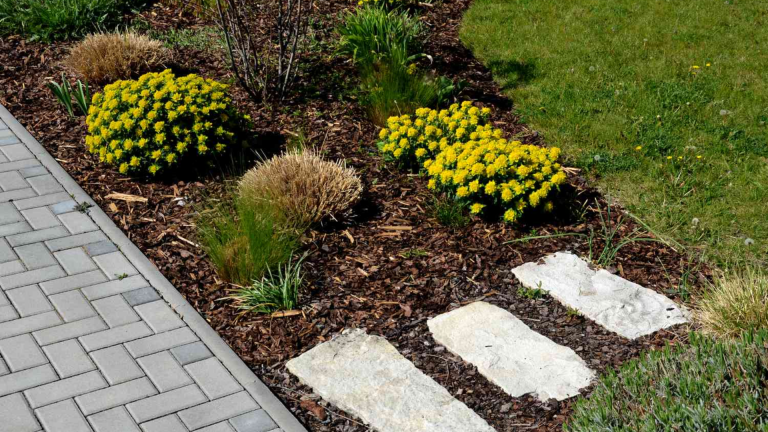If you’re shopping for mulch, you’ve probably seen bags of cypress mulch at your local garden center. It looks clean, smells fresh, and is often labeled as long-lasting. But is cypress mulch really a good choice for your garden or yard? That’s a great question!
Cypress mulch is derived from the bark and wood of cypress trees, and many people prefer it because it helps suppress weeds, retains soil moisture, and gives garden beds a neat and tidy appearance. It also breaks down slowly, which means you don’t have to replace it as often.
However, there are also some things to consider, such as its origin and the impact on the environment. In this guide, I’ll examine the pros, cons, and best uses for cypress mulch, allowing you to determine if it’s the right choice for your garden.
What Is Cypress Mulch?
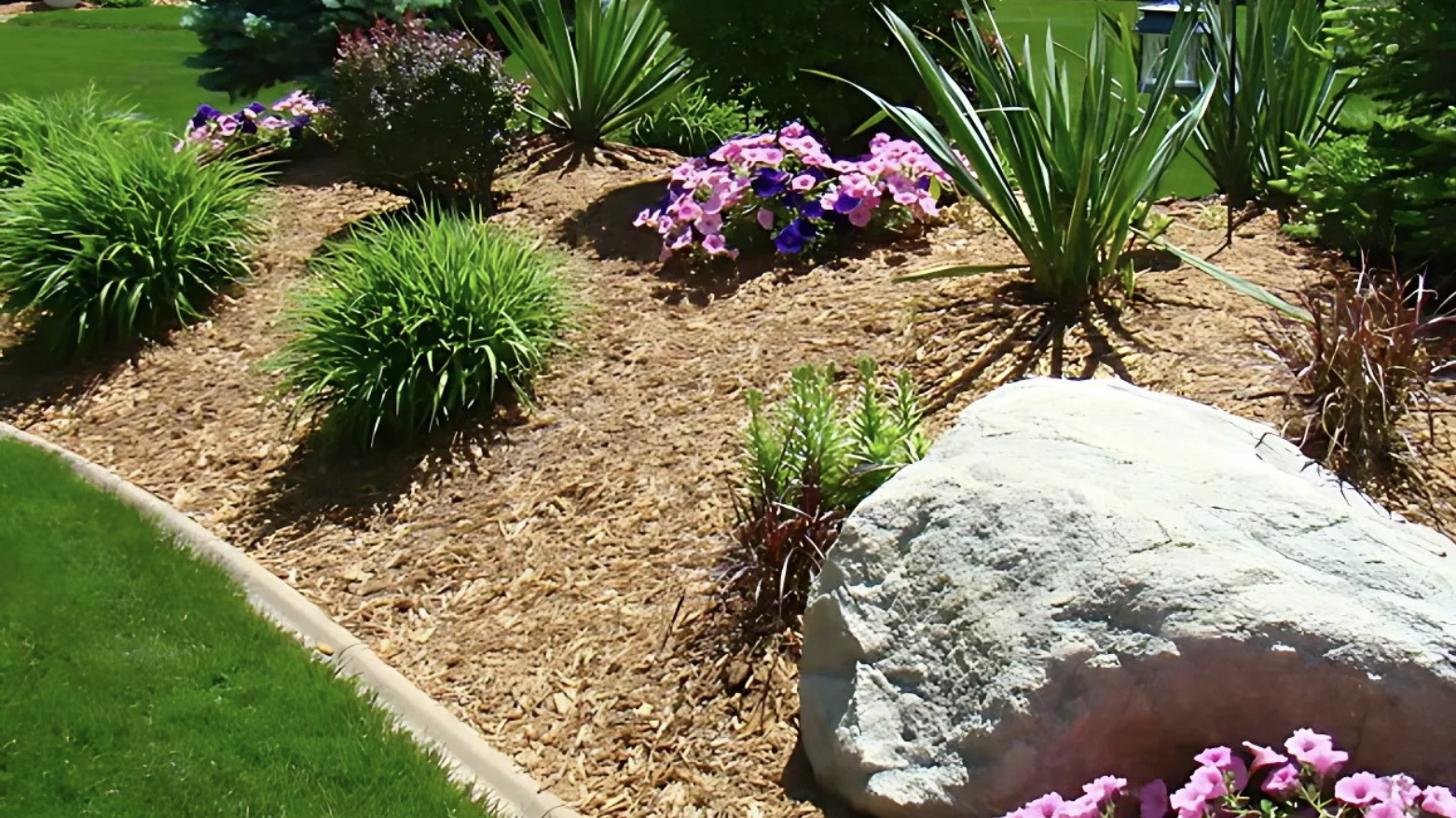
Cypress mulch is made from the bark and wood of cypress trees, usually bald cypress or pond cypress. It’s commonly sold in shredded or chipped form and has a natural, light brown color. You’ll often see it used in flower beds, around trees, or in landscaping because it has a clean, uniform look.
This type of mulch is renowned for its long-lasting properties. It breaks down more slowly than other mulches, which means you don’t have to replace it as often. It also has a pleasant, woody smell and can help your garden beds look neat and well-kept.
Cypress mulch is readily available at garden centers and is offered in both bagged and bulk quantities. It’s often used as a decorative mulch, but it also helps with moisture retention and weed control, just like other organic mulches.
Benefits of Cypress Mulch
Cypress mulch is popular for a reason—it offers several useful benefits that make it a great option for many gardeners. If you want something that looks good and helps protect your plants, cypress mulch might be a smart pick.
- Insect-Resistant: Cypress mulch contains natural oils that repel bugs like termites and ants.
- Long-Lasting: It breaks down slowly, so you won’t have to replace it as often as other mulches.
- Moisture Control: It helps retain water in the soil, which is beneficial for hot or dry weather conditions.
- Temperature Control: Mulch helps keep soil cooler in summer and warmer in winter.
- Neat Appearance: Cypress mulch gives garden beds a clean, uniform look.
With these benefits, it’s easy to see why many gardeners choose cypress mulch to protect and freshen up their outdoor spaces.
I find it to be a reliable choice that keeps my garden looking great and thriving year-round.
Best Ways to Use Cypress Mulch
Cypress mulch can be a great addition to your garden or yard when it’s used the right way. It doesn’t just make your landscaping look neat—it also protects your plants and helps the soil stay healthy. To get the best results, follow these steps and tips for using cypress mulch correctly and safely.
Step 1: Prepare the Area First
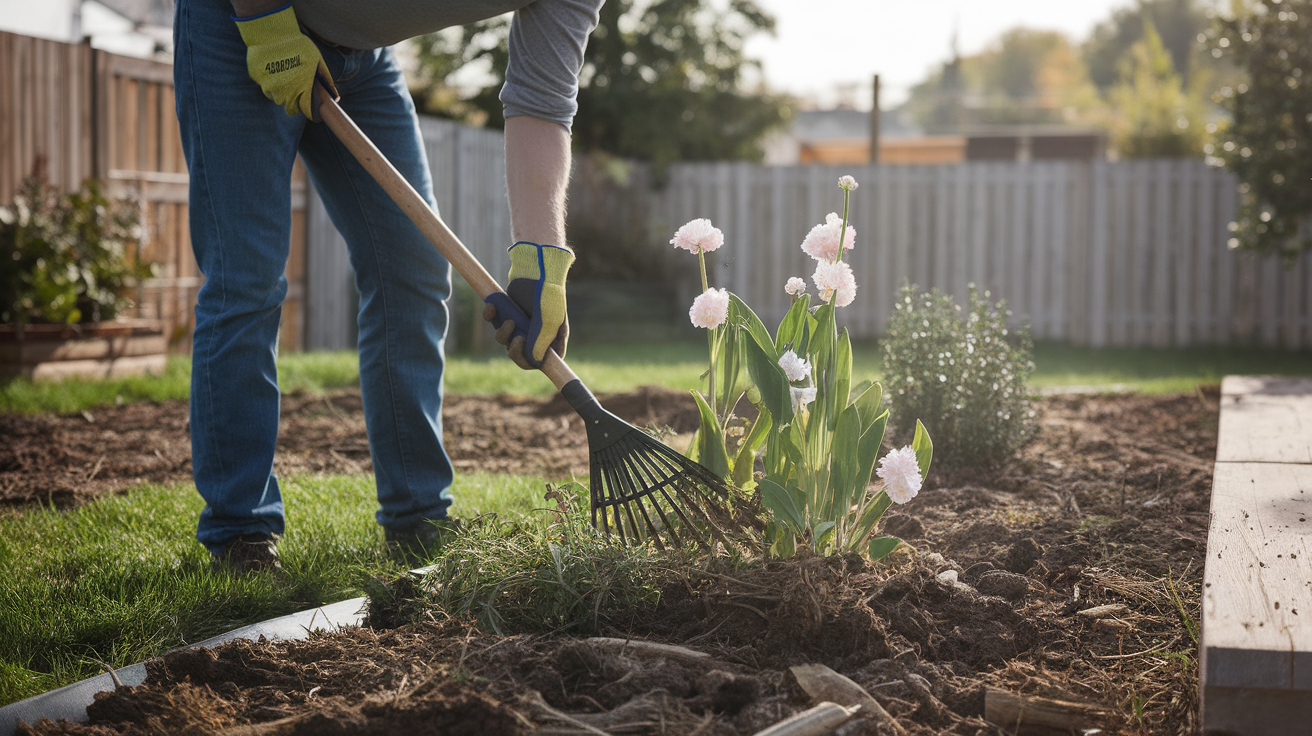
Before applying any mulch, ensure the ground is prepared. Remove any weeds, dead plants, or leftover mulch from previous seasons. Rake the soil gently to break up clumps and smooth out the surface. If you’re adding mulch around existing plants, be careful not to disturb the roots. Starting with a clean surface helps the mulch sit evenly and perform its job more effectively.
Step 2: Spread a Layer of 2–3 Inches
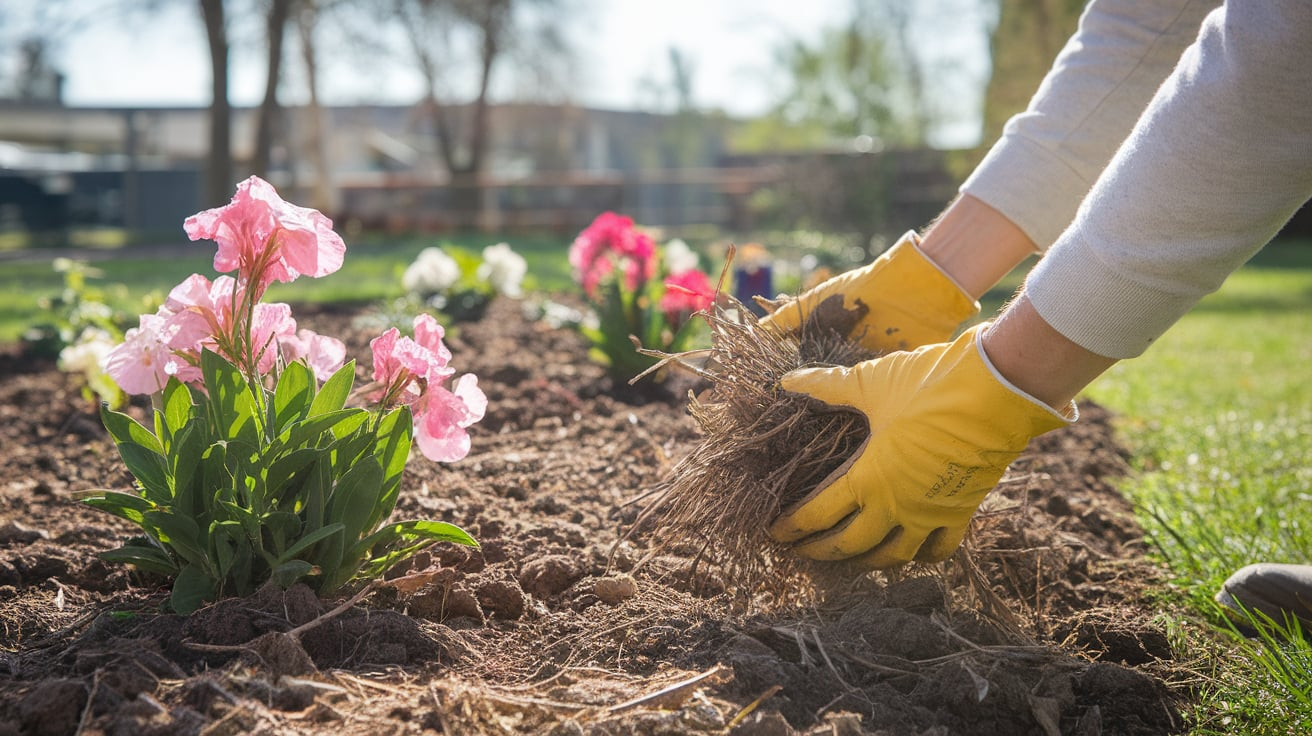
Once the area is clean, start spreading the cypress mulch. You can use your hands, a shovel, or a rake. Spread it in a layer that’s about 2 to 3 inches thick. That’s the sweet spot—thick enough to block weeds and hold moisture, but not so thick that it suffocates your plants or blocks water from reaching the roots.
For larger areas, I work in small sections to better control the depth. Always aim for an even layer. Uneven mulch won’t look as nice and may not work as well.
Step 3: Keep Mulch Away from Plant Stems and Tree Trunks
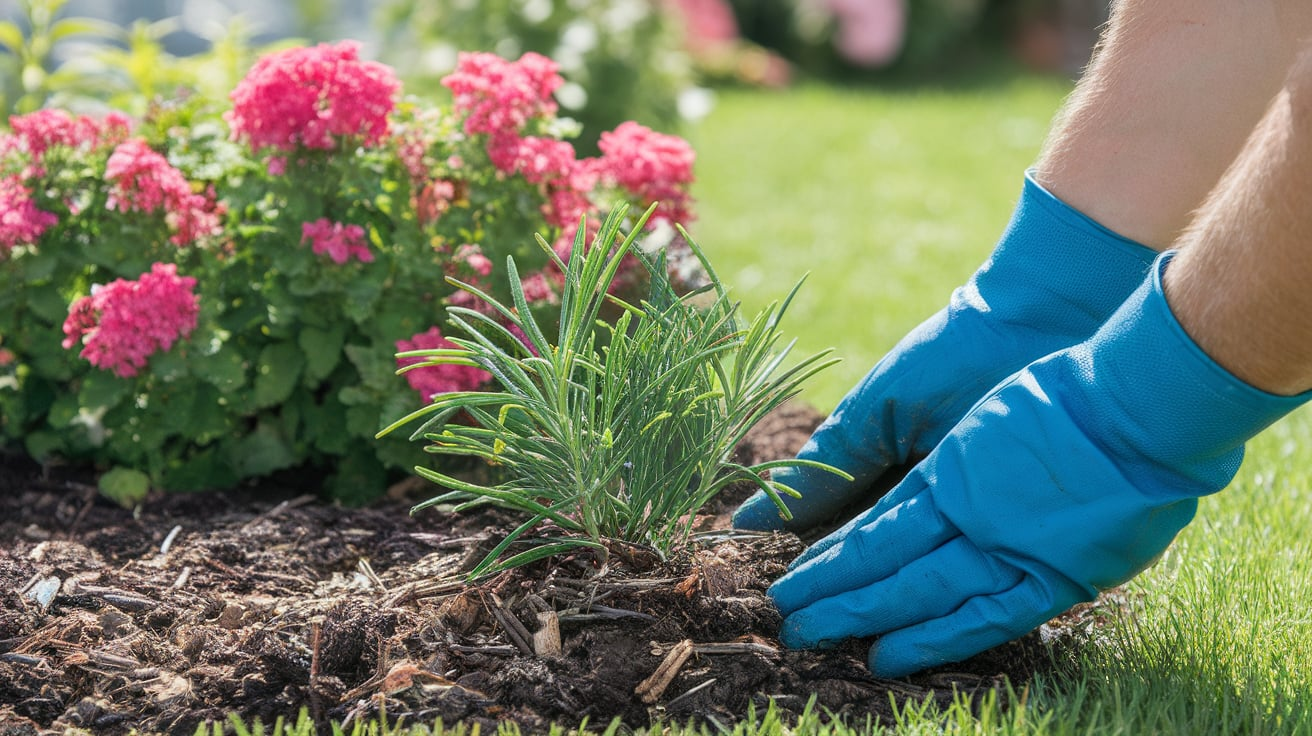
One of the most common mistakes is piling mulch right up against the base of a plant. While it might seem like extra protection, it can actually cause problems. Mulch that’s too close to stems or trunks can trap moisture and cause rot or invite pests.
I tend to Leave about 2–3 inches of space around small plants, and at least 4–6 inches around trees or large shrubs. This keeps air flowing and prevents mold or mildew from building up around the base.
Step 4: Water Lightly After Applying

After you’ve spread the mulch, gently water the area. This helps the mulch settle into place and stay put, especially if it’s windy. Watering also helps the mulch begin its job of holding in moisture and protecting the soil underneath.
If the weather is dry, be sure to keep watering your plants regularly. While mulch helps hold water in the soil, it doesn’t replace normal watering needs.
Step 5: Refresh and Maintain as Needed
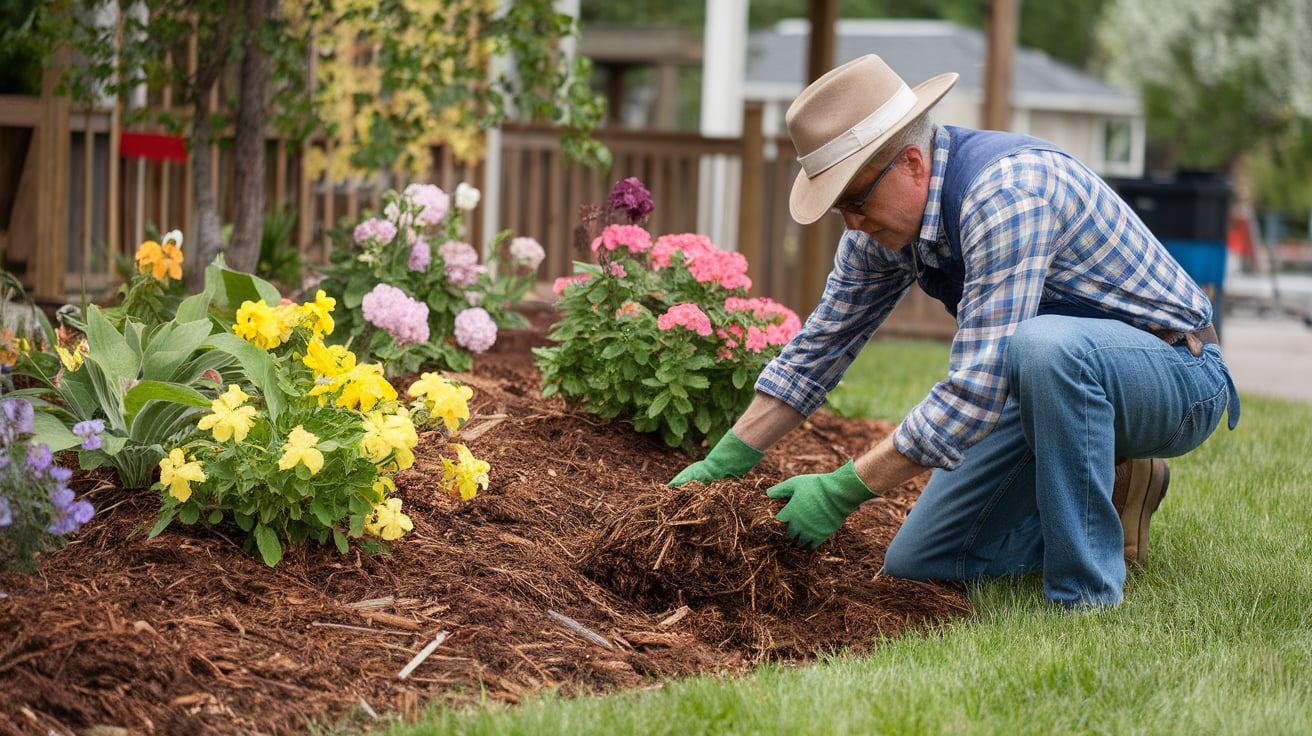
Cypress mulch breaks down slowly, which is one of its big benefits. However, over time it can thin out, especially in areas with heavy rain or wind. Check your mulch at least once or twice a year.
If the layer has worn down to less than 2 inches, it’s time to add more. You don’t have to remove the old mulch—just rake it to loosen it up and spread a fresh layer on top. This keeps your garden looking great and your soil well protected.
Cypress mulch works well around trees, shrubs, flower beds, and pathways. It’s especially helpful in areas where you want low maintenance and a long-lasting mulch. It may not be the best choice for vegetable gardens or areas where you want to improve soil nutrition quickly, since it doesn’t break down as fast as compost or leaf mulch.
Choosing the Best Cypress Mulch
If you’ve decided to go with cypress mulch, choosing a good-quality one makes a big difference. Not all cypress mulch is the same—some bags are filled with low-quality wood or mixed with other materials.
1. Look for 100% Cypress on the Label: The best cypress mulch is made only from cypress wood and bark. Avoid bags that say “cypress blend” or “wood mulch,” as these may include filler wood that doesn’t work as well.
2. Choose Shredded Over Chipped: Shredded cypress mulch stays in place better and breaks down more slowly. It’s also easier to spread and gives a smooth, even finish.
3. Check the Color and Texture: High-quality mulch should be light brown, soft, and fresh-smelling. Skip bags with mold, too much dust, or a strong sour odor.
Using the best cypress mulch helps your garden stay healthy and looking great for longer!
Downsides of Cypress Mulch
While cypress mulch has some great benefits, it’s not perfect for every garden. Before you use it, it’s a good idea to think about the possible downsides. Here are some things to consider:
- Environmental Concerns: Some cypress mulch is made by cutting down trees from wetlands or old forests, which can hurt natural ecosystems.
- Not Very Nutrient-Rich: Unlike compost or leaf mulch, cypress doesn’t add much nutrition to your soil as it breaks down.
- Can Be Expensive: It often costs more than other mulch types like pine bark or hardwood mulch.
- May Include Filler Wood: Some cheap mulch bags labeled “cypress” might be mixed with other types of wood.
Knowing these drawbacks can help you make a better choice based on what matters most to you—whether it’s your garden’s health, your budget, or the environment.
Alternatives to Cypress Mulch
While cypress mulch has its benefits, it’s not the only mulch out there. Depending on your gardening goals, budget, or environmental concerns, you might want to try something different. Many other mulch options work just as well—and sometimes even better—for certain needs.
| Mulch Type | Benefits | Best For | Breaks Down Fast? |
|---|---|---|---|
| Pine Bark | Holds moisture, looks neat, easy to find | Flower beds, trees, and shrubs | Medium |
| Cedar Mulch | Natural insect repellent, long-lasting | Decorative beds, pest-prone areas | Slow |
| Pine Straw | Lightweight, easy to spread, good for erosion | Sloped areas, gardens with acid-loving plants | Medium |
| Compost | Nutrient-rich, improves soil health | Vegetable gardens, raised beds | Fast |
| Wood Chips | Inexpensive, easy to get in bulk | Paths, playgrounds, garden borders | Medium |
| Shredded Leaves | Free, adds nutrients as it breaks down | Natural gardens, fall planting areas | Fast |
As you can see, there’s a mulch for every type of garden and every kind of gardener. If cypress mulch doesn’t fit your needs or values, one of these other options might be the perfect match.
Conclusion
Cypress mulch can be a great choice for gardeners seeking a clean, long-lasting mulch that enhances moisture retention and weed control. It looks nice, smells fresh, and even keeps some bugs away.
But like any product, it’s not perfect for every yard. It doesn’t add many nutrients to the soil, and some types may come from unsustainable sources, which is something to think about if you care about the environment.
If you decide to use Cypress mulch, be sure to apply it correctly—keep it a few inches thick, avoid piling it around stems, and check it periodically to keep it fresh. And if cypress doesn’t seem like the right fit for your garden, there are plenty of great mulch alternatives out there that work just as well.


